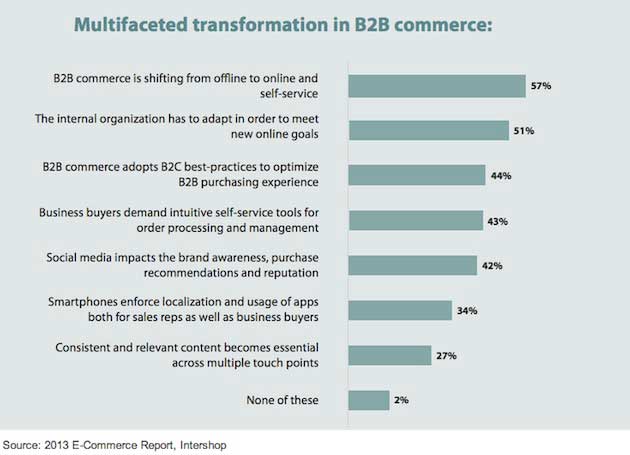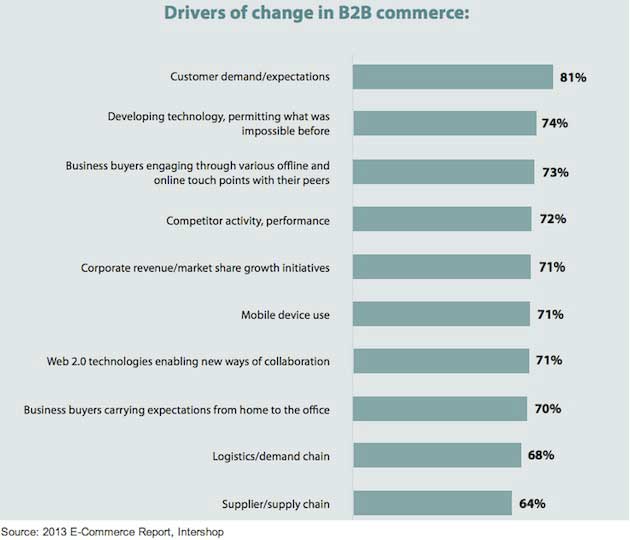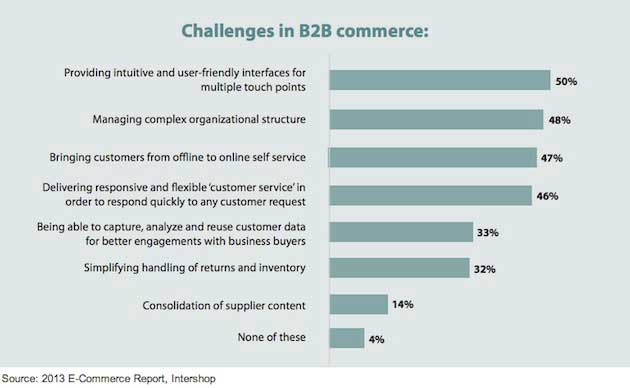Most B2B vendors (57%) say B2B commerce is fundamentally changing and shifting from offline to online, according to a recent report from Intershop.
A similar number of those surveyed (51%) said they are changing their organizational structures and business models to adapt to this shift.
Moreover, 44% of respondents said business-to-business vendors are now adopting business-to-consumer best-practices to change and optimize the B2B purchasing experience.
Below, additional findings from the report, which was based on data from a survey of 400 European and American senior IT and business decision-makers working for B2B merchants.
What's Driving the Changes
- 81% of survey respondents said changing consumer expectations are driving the changes in B2B commerce.
- 74% said new technology has made it possible to offer experiences that weren't possible before.
Biggest Challenges
- Almost all of the organizations surveyed (96%) said they are facing challenges in adapting to new B2B commerce trends.
- 50% find it difficult to provide intuitive and user-friendly interfaces for multiple touchpoints, such as B2B online stores and mobile apps.
- 48% said it is difficult to manage complex organizational structures.
- 47% face the challenge of convincing their offline customers to use e-commerce and self-service channels.
Mobile Commerce
- Just over half (51%) of all B2B companies surveyed are currently using mobile touchpoints (including mobile stores and apps).
- Almost half of the remaining organizations plan to develop a mobile presence in the near future.
Online Commerce
- 92% of the 400 companies surveyed already market their products online. The remaining 8% plan to follow suit.
- Of the organizations that are already selling online, 95% said they plan to boost the online share of their revenue in the future.
About the research: The report was based on a survey of 400 senior IT and business decision makers from merchants with a B2B focus and annual online revenues ranging from $1 million to more than $100 million. The survey was conducted in April and May 2013. Most respondents (280) were from Europe; 120 were from the US.







